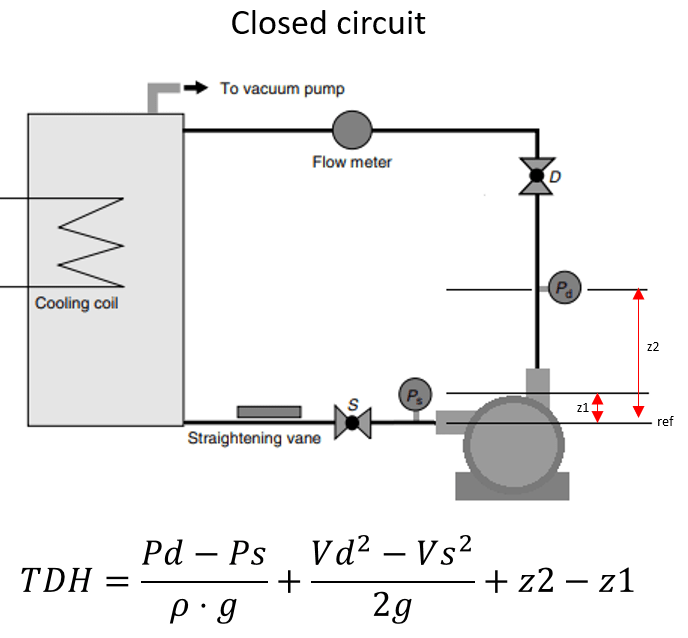I'm a little confused about the static height in a closed system.
For an assignment we have to calculate the pump head for a closed system, but everywhere I read I see that static head for closed system is 0. Normally you would take into account the difference between the gauges/manometers to correct for height difference is this not needed for a closed system?
From the attached figure I cannot see why I should not correct for it as they are on different levels.

Should I correct for the height difference of the gauges? And if not why not?
For an assignment we have to calculate the pump head for a closed system, but everywhere I read I see that static head for closed system is 0. Normally you would take into account the difference between the gauges/manometers to correct for height difference is this not needed for a closed system?
From the attached figure I cannot see why I should not correct for it as they are on different levels.

Should I correct for the height difference of the gauges? And if not why not?
